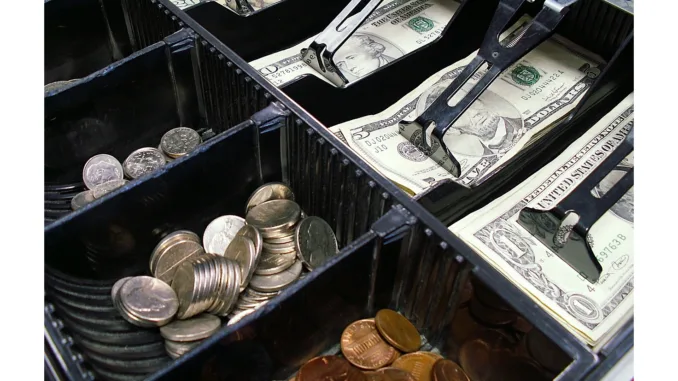
We continue our debate looking at the two sides of having a cashless system.
BY EMILY JOY MENESES
BARISTA MAGAZINE ONLINE
Featured photo by Charles Thompson
Welcome back to “Let’s Talk About: The Pros & Cons of Cashless Systems,” a two-part article discussing the pros and cons of eliminating cash from coffee shop transactions. In part one, we discussed how going cashless can increase efficiency and reduce the risk of theft—but that it can also lead to technical difficulties, and potentially be alienating to certain groups of customers. Today, we’ll continue our exploration of the topic and hear more insight from Barista Magazine Online readers.
More Pros and Cons of Transitioning to a Cashless Payment System

Pro #3 : Mitigating Health Concerns
Since the first onset of COVID-19, we’ve all become more aware of health concerns and hygiene. Cashless payments, which reduce physical contact and the spread of germs via cash, have become increasingly popular. While some argue that coffee workers can simply wash their hands after handling cash, others say that having to do so constantly can mess with bar flow.
“I’m fully on board with people washing their hands when handling cash, but not having cash eliminates that potential spread of germs pretty drastically as people (are constantly going) back and forth (between) register (and) handling food,” shares Barista Magazine Online reader Ren Betten.
Con #3: Transaction Fees
While going cashless can help fend off health concerns, it can still potentially raise issues in another sector: finances. Digital payment systems involve transaction fees that can add up over time—something that can significantly impact a small business.
This article by Meghan Cruz of the National Retail Federation, for example, explains how, in the United States, swipe fees are the highest cost for businesses, after labor. As a result, small businesses—which often have to pay higher rates than larger businesses—are often forced to raise their prices. Eliminating cash completely would mean taking on these fees for every single transaction. That may not be possible for smaller shops.

Pro #4: More Accurate Financial Tracking
Still, those for cashless systems point to how using digital-only payments can lead to more precise financial tracking. We’ve all been there—when you’re counting the drawer at the end of the day and, for some reason, things aren’t adding up. No matter how careful we are, humans are simply prone to error. Digital payment systems, which automatically generate receipts and records, simplify bookkeeping and ensure accuracy. This accuracy that cashless systems provide can help with generating more precise financial reports, understanding sales patterns, and managing inventory more effectively.
Con #4: Privacy Concerns
This last point on our list may perhaps be the most widely debated: privacy concerns. Those who are against cashless systems argue that relying fully on technology may mean putting ourselves and our information more at risk. Even if you don’t have anything to hide, some of us simply don’t want our every move being tracked.
In part one, we also discussed how cashless systems can help reduce theft. But some argue that going cashless won’t necessarily prevent it from happening. “I think getting rid of cash could actually shift some crime into the digital space, leading to more cyber attacks,” shares Barista Magazine reader Natasha Everald Solowoniuk.

No Matter Your Decision, Be Prepared
Whether or not your business decides to go cashless, knowing all sides of the debate can help you prepare for any obstacles you may run into. For example, for businesses that accept cash, disinfecting surfaces regularly and having safety precautions in place to help reduce theft can mitigate the health and safety concerns that come with handling cash.
On the other hand, shops that transition to cashless systems can manage potential downsides by having a plan for when the internet connection goes awry, or by having recommendations for nearby businesses that cash-only customers can go to.
“If your business is cashless, baristas should be able to navigate these situations well,” shares Ren. “If there is a person who comes in with a need of nourishment, be ready with some walking-distance recommendations that take cash!”
ABOUT THE AUTHOR
Emily Joy Meneses (she/they) is a writer and musician based in Los Angeles. Her hobbies include foraging, cortados, vintage synths, and connecting with her Filipino roots through music, art, food, and beverage.
Subscribe and More!
Out now: It’s the August + September 2024 issue of Barista Magazine! Read it for free with our digital edition. And for more than three years’ worth of issues, visit our digital edition archives here.
You can order a hard copy of the magazine through our online store here, or start a subscription for one year or two.





